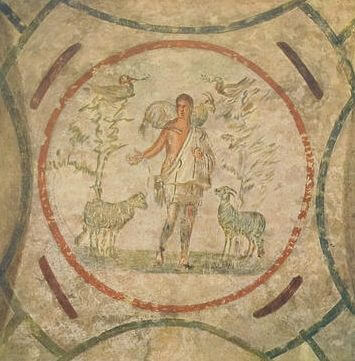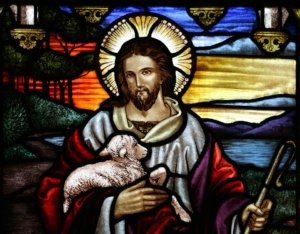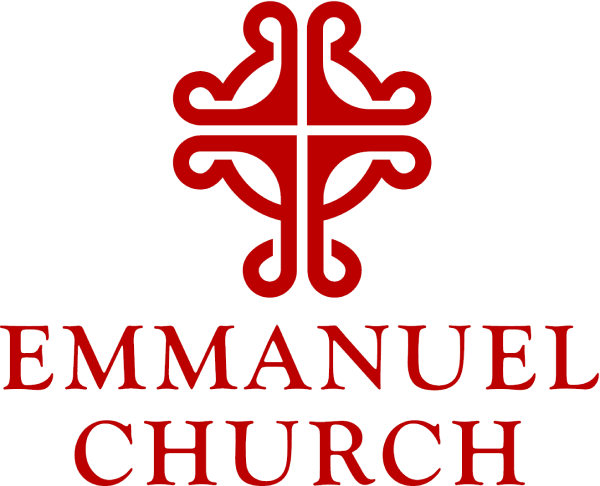
The Good Shepherd’s Call
11 “I am the good shepherd. The good shepherd lays down his life for the sheep. 12 The hired hand, who is not the shepherd and does not own the sheep, sees the wolf coming and leaves the sheep and runs away—and the wolf snatches them and scatters them. 13 The hired hand runs away because a hired hand does not care for the sheep. 14 I am the good shepherd. I know my own and my own know me, 15 just as the Father knows me and I know the Father. And I lay down my life for the sheep. 16 I have other sheep that do not belong to this fold. I must bring them also, and they will listen to my voice. So there will be one flock, one shepherd. 17 For this reason the Father loves me, because I lay down my life in order to take it up again. 18 No one takes[a] it from me, but I lay it down of my own accord. I have power to lay it down, and I have power to take it up again. I have received this command from my Father.” — John 10: 11-18
“I am the good shepherd”. Such comforting words!
 The most popular image in early Christian art is the good shepherd. Second and third century Imperial persecutions meant that Christian religious imagery had to be hidden. In the city of Rome, that art was literally underground. It was painted in the fresco decorations of the catacombs—the vast underground caverns cut into the volcanic tuffa, where all ordinary Christians, Jews and pagans were buried. In Roman tomb decorations Jesus was shown as a simple man with a couple of sheep at his feet, and carrying one on his shoulders. So the reference was veiled, but unmistakable to early believers.
The most popular image in early Christian art is the good shepherd. Second and third century Imperial persecutions meant that Christian religious imagery had to be hidden. In the city of Rome, that art was literally underground. It was painted in the fresco decorations of the catacombs—the vast underground caverns cut into the volcanic tuffa, where all ordinary Christians, Jews and pagans were buried. In Roman tomb decorations Jesus was shown as a simple man with a couple of sheep at his feet, and carrying one on his shoulders. So the reference was veiled, but unmistakable to early believers.
“I am the good shepherd.” The words, the image, were and are comforting, indeed.
But Jesus’ talk in John was not meant to comfort his audience. Instead he was teaching his followers about the cost of discipleship, and he was scolding the Pharisees. Jesus had just given sight to the man born blind. Furious, the Pharisees hounded the man, arguing with him, and trying to disprove the miracle. Finally the man sought Jesus out in the crowd; he declared his belief in Jesus as the Son of Man and worshipped him! Now the Pharisees are being told off—cast as hired hands in Jesus’ discourse. They are not having a good day.
The Gospel of John
We’re in the Easter season and have heard a couple of Jesus’ post-Resurrection appearance stories. So why is our lectionary taking us back into Jesus’ life before the Crucifixion? And why from the Gospel of John?
I can’t speak for the folks who put the lectionary together, but it struck me that John’s gospel speaks clearly and strongly to three key issues: who Jesus was; who we are as Jesus’ followers; and what Jesus calls us to do in the world.
Who is Jesus? From the outset, John’s gospel repeatedly says that Jesus is God. Boldly in the preface, the narrator states: “In the beginning was the Word was with God. And the Word was with God. And the Word was God.”
Jesus’ voice in John is very different from that in the synoptic gospels. Uniquely in John, Jesus identifies himself with God in the seven “I am” statements that are laced through this gospel.
“I am the bread of life.” (John 6:35, 41, 48, 51)
“I am the light of the world.” (John 8:12)
“I am the door of the sheep.” (John 10:7,9)
“I am the good shepherd.” (John 10:11, 14)
“I am the resurrection and the life.” (John 11:25)
“I am the way, the truth, and the life.” (John 14:6)
“I am the true vine.” (John 15:1, 5)
Jesus’ self-identification with God there is unequivocal. That’s because his words for “I am” in the original Greek—“ego eimi”–are God’s own words in Exodus 3:14. That is where Moses asked God’s name, and God replied: “I am” “Ego eimi”.
Later in this tenth chapter of John, Jesus says, outright: “I and the Father are one.” In John, Jesus is God from the very beginning and right through.
Who Are Jesus’ followers?
What about Jesus followers? Who does John’s Jesus say we are? Who are we to be?
In John, our identity takes shape in Jesus’ farewell discourse to the disciples on the night before the Crucifixion. Tenderly, Jesus calls the disciples “little children”, then embraces and includes them (and us all) in his mystical unity with God, saying:
“In a little, while the world will no longer see me, but you will see me; because I live, you also will live. On that day you will know that I am in my Father and you in me and I in you.” (John 14:19-20).
In short, we, too, are one with God and Jesus.
Most importantly, Jesus commands us to be a community united in God’s love. “As the Father has loved me, so I have loved you: abide in my love….This is my commandment, that you love one another as I have loved you”. (15:9-10)
Finally, what does Jesus call us to do, as his disciples? “Follow me”. Follow the example of Jesus’ deeds and words.
Jesus first created a community united in love, prayer, and service. Listening for God’s lead in every moment, he reached out to welcome all people into that first Beloved Community, defying boundaries of gender, culture, creed, class that would exclude anyone. Two examples in John are Jesus’ long talk with the Samaritan woman at the well—who was excluded as a woman and despised because of her faith—and his healing of the man born blind, who was judged a “sinner” and shunned because of his birth defect. Both of these “outsiders” recognized Jesus before his own disciples did, and they became his followers.
Like the good shepherd, we are called lovingly to care for and protect one another.
Love is an Action Verb

St John’s Ashfield stained glass. Stained glass: Alfred Handel, d. 1946[2], photo:Toby Hudson
Claudia and I lived in Minneapolis for six years. Like many people who have dwelt in hope and dread since Floyd’s death, we were deeply relieved about the guilty verdict that came down on Tuesday. It’s important, but it’s just one step on the long road to a truly just society.
Through our Minnesota friends’ reports we know that in these dark days, the light of faith has burned all the more brightly and urgently in the Twin Cities. It has been kindled, stoked, and held aloft by those who were “brave enough to be it” (Amanda Gorman).
Among those fiercely brave souls are Sondra and Don Samuels. For many years they have lived, worked, and prayed to establish racial equity and justice on Minneapolis’ North Side, a neighborhood socially and economically cursed for generations by the legacy of racist redlining.
During the trial of Derek Chauvin, Don Samuels launched “Healing our City: a Virtual Prayer Tent”, on Facebook. This virtual Beloved Community has drawn in people of every color, creed, and background, from all over the globe, who gather to pray daily in the morning for justice and healing. Each session begins with a brief reflection, followed by nine minutes and twenty-nine seconds of silent prayer. You are welcome to listen to the moving reflections of past speakers and to join as they continue through May 25.
Becoming faithful to Jesus’ call is a life-long journey. I would like to close with a personal note.
I was reared with love and respect for people of color. Still, and shamefully, only in recent years have I been waking up to the fact that I was born blind. A WASP a culture of white privilege, I was blind to the centuries-long systemic, cruel injustice still inflicted upon people of color, some of whom loved and cared for me when I was a child. I loved them, as well—but far, far too passively.
The Covid-time shutdown has helped me better to see my own ignorance, prejudices and blindness, to stop, look, listen and delve into the history and reality of racial injustice more deeply than ever, and to commit more fully to change it.
I was blind, indeed. Guided by the light of Christ’s commandment to love in action, I now see more clearly what, as a disciple, I am called to be and to do.
Thanks be to God.
Amen

